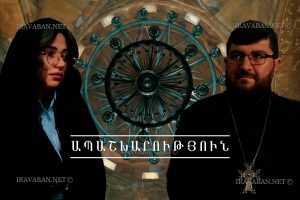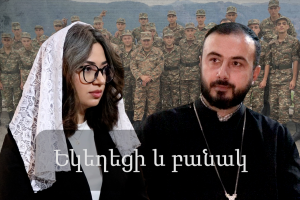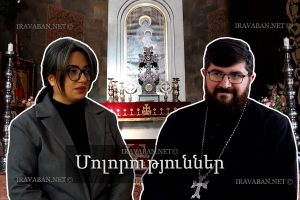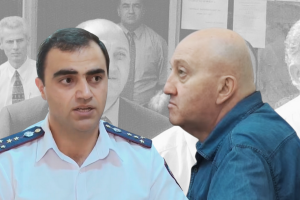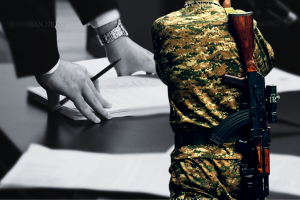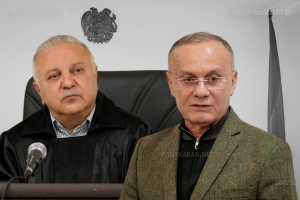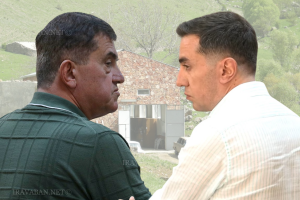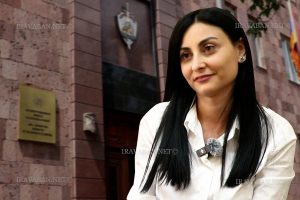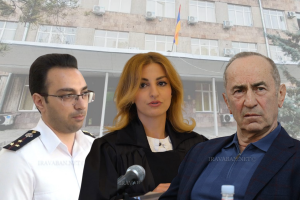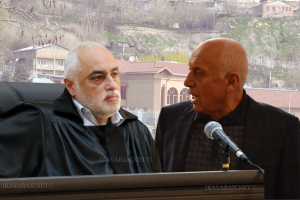The Liturgy symbolizes the tasting of the body and blood of Christ, represents the sacrifice of Christ for the salvation of man. In order for man not to remain in sin, God gave his only-begotten Son, Jesus Christ, so that through him, through communion with him, man might be saved. The Holy Liturgy symbolizes the sacrifice of Christ. Father Bartholomew Hakobyan, the caretaker pastor of the Holy Martyrs Church in Nubarashen, said this in the interview within the framework of Iravaban.net’e series “The Church and the Law”.
– Who has established the Holy Liturgy?
– Jesus Christ personally established it. At the Last Supper, Christ took the bread and the wine, blessed them, and gave them to the disciples, saying, “Take and eat; this is my body. And he took a cup of wine and gave thanks to God for it. He gave it to them and said, “This is My blood of the covenant, which is poured out for many for the forgiveness of sins.….” And it was this covenant that Christ affirmed. In other words, a condition was established that a person should follow Christ, reach salvation through him, and return to paradise. And it is by tasting the body and blood of Christ that man must be able to atone.
– Father Bartholomew, is there any myth in this regard?
– In the beginning, the Liturgy was oral, that is, after the ascension of Christ, when 10 days later the disciples received the gifts of the Holy Spirit, they, according to the word of Christ, which said, You shall do so, the disciples, at first did orally, taking bread and wine, blessing, remember an episode of Christ’s ministry, preach and taste, which also was called “agape”. Later, over the centuries, when the disciples were martyred, their disciples, the Holy Fathers of our church began to arrange this Liturgy as to how it would be performed.
– When is the Holy Liturgy served?
– Every Sunday, because it is considered the Lord’s Day, is considered a day dedicated to the Lord. But since, in addition to the Lord’s Day, there are days of remembrance dedicated to the saints during the week, Monday, Tuesday, Thursday and Saturday, these days the Holy Liturgy can be served as well.
– Let’s try to refer to the parts of the Liturgy separately.
– Before reaching the essence of the Holy Liturgy, the clergy and the church are preparing. The clergyman comes, enters the depository and takes off the old clothes, puts on new, brighter clothes, which symbolizes the fall of the old man, and has the sacrament of renewal by Christ. The priest puts on a crown, a vakas, a white shirt, and other priestly garments that symbolize the glory of Christ.
The priest goes to the church, the central part, where a confession takes place, the priest confesses the sins he has committed, because he also “is a man” who can sin. This is where the first part of the Liturgy begins, when they ascend the Holy Tabernacle, where the bread and wine are prepared. The hymn of intercession is heard, the priest incenses the Holy Altar, goes down, which is called the coming into the world.
Blessing the people, incensing rises to the Holy Table and the three holy trinity sounds. Further the scriptures of the day are read from the Old Testament, the New Testament, or the letters of an apostle, and then the Gospel of the day is read from the tabernacle of the church. Then all together read aloud the most important dogma of our church: our Faith is said aloud what we believe.
What do we call the Liturgy itself, because the essence of the Liturgy takes place right here. Christ took bread and wine, blessed it, and said, “This is my body, this is my blood.” During the liturgy, we take unleavened bread, dry wine, we pray that it will be transformed and become the body and blood of Christ. The very essence, the transformation, takes place in this very part.
For example, when the hymn “Son of God” is sung, the priest blesses the bread three times, the wine three times, the bread three times together with the wine, the sacrament of conversion, when the bread and wine become the blood and body of Christ. It is in this part that it takes place.
During this process, a very important ceremony takes place: the priest removes his crown, that is, he removes his authority and enters the service. He takes off his slippers because the most important holiness, the body and blood of Christ, will be placed before him. The remembrance of the saints follows when we ask for the intercession of the saints for us.
– Let’s move on to the last part of the Liturgy, the Release part. What is happening in this part?
– We prepare the sacrament, the body and blood of Christ, we ask the intercession of the saints, we rejoice, and then we give the Christian a taste, and only after the eating does the Liberation begin. That is, we invited everyone into the Church to be united with Christ, and now we are releasing him, letting him go out and live in the mystery of Christ.
– On holidays, for example, Christmas, Easter, we see that government officials also participate in the Holy Liturgy. Is this a part of the state ritual or an episode of serving as an example, what would you say about this, how important is it for a state official, the leaders of the country to participate in the Liturgy?
– It is not ceremonial, because the Liturgy is basically very simple and we do not even have another festive way or an everyday Liturgy. It is the same. it does not exist for the clergy, then especially for the laity there is nothing ritualistic. This has the meaning of serving as an example. As a Christian, an official, comes to the Liturgy, naturally, the church, as the house of God, emphasizes the role and significance of this person in community or state life and honors him to stand before it. They serve as an example.
– Father Bartholomew, summing up the conversation, lets mention the sacrament of Holy Liturgy once again. How obligatory is the presence of a Christian at the Holy Liturgy?
– The Liturgy is the most important ceremony in the life of a Christian. Today, the society does not realize the importance of the Liturgy in its life. Our Christian people call Liturgy every church ceremony. Why is the Liturgy important? Because two important sacraments take place through the Liturgy. First, the Sacrament of Repentance is completed through the Communion, and the Sacrament of Communion itself.
We can get dirty, but we do not get bored, we constantly wash ourselves, watch our body. In the same way we must be able to nourish, wash, and cleanse our soul. And the most important ceremony of washing, purifying and decorating the soul is the Holy Liturgy. Yes, it is necessary for a Christian to participate in the Liturgy, because through the Sacrament of Liturgy we reaffirm our union with Christ. We cannot say that I was baptized or once participated in the Liturgy, I will not sin anymore. God is waiting for man in his temple.

